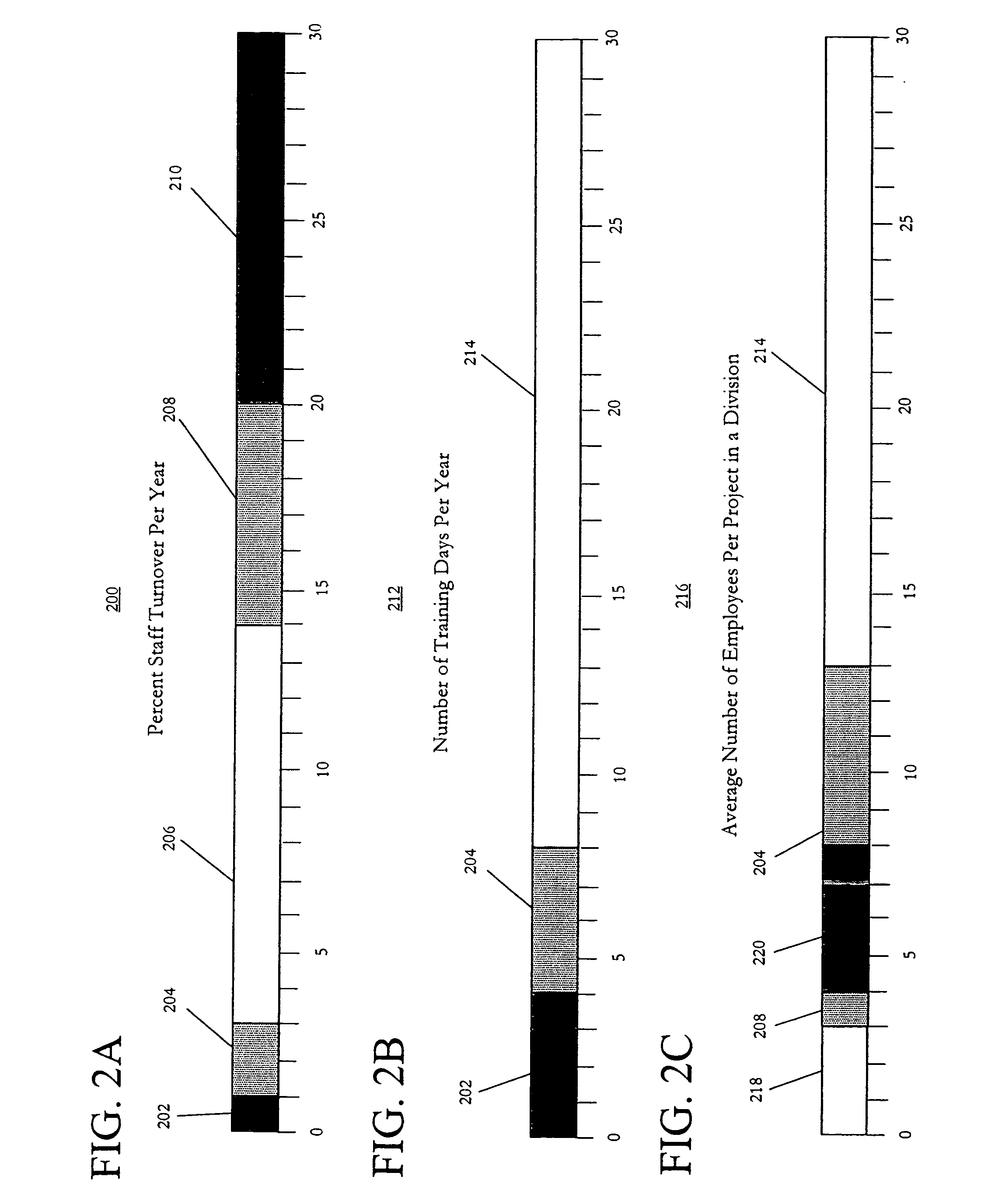System and method for determining composite indicators
a composite indicator and indicator technology, applied in the field of determining composite indicators, can solve the problems of difficult use and/or difficult combination of a large amount of information
- Summary
- Abstract
- Description
- Claims
- Application Information
AI Technical Summary
Benefits of technology
Problems solved by technology
Method used
Image
Examples
Embodiment Construction
[0017]In exemplary embodiments of the present invention, composite indices or indicators may be calculated as simple functions of a group of underlying variables, either weighted or unweighted. Such composite indices have proved durable and valuable in many aspects of economic life and in many aspects of engineering. The underlying reason for this durability is that any continuous multivariate partially differentiable function is approximately linear at any particular point, and, therefore, may be approximated by its tangent line or space over short ranges with some accuracy by a comparatively simple linear or multiplicative formula. In many exemplary methods of the present invention, the use of such approximations may lead to only a slight loss of generality, because these exemplary methods presuppose that the ranges of values of most interest are known (i.e. the defined ranges around thresholds). Additionally, the resulting simplification of the mathematical formulae used in the c...
PUM
 Login to View More
Login to View More Abstract
Description
Claims
Application Information
 Login to View More
Login to View More - R&D
- Intellectual Property
- Life Sciences
- Materials
- Tech Scout
- Unparalleled Data Quality
- Higher Quality Content
- 60% Fewer Hallucinations
Browse by: Latest US Patents, China's latest patents, Technical Efficacy Thesaurus, Application Domain, Technology Topic, Popular Technical Reports.
© 2025 PatSnap. All rights reserved.Legal|Privacy policy|Modern Slavery Act Transparency Statement|Sitemap|About US| Contact US: help@patsnap.com



